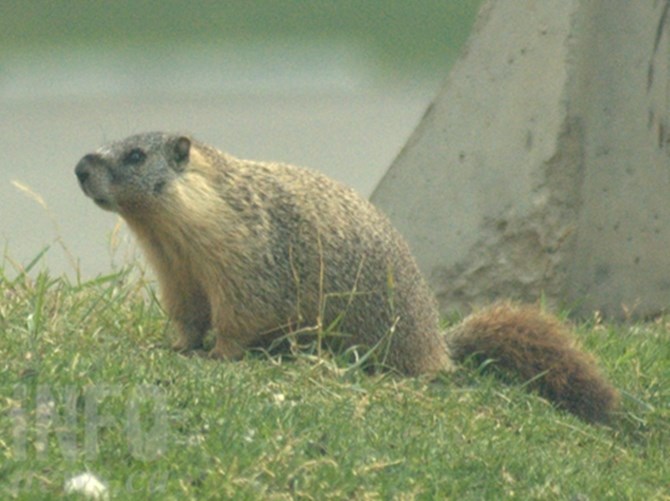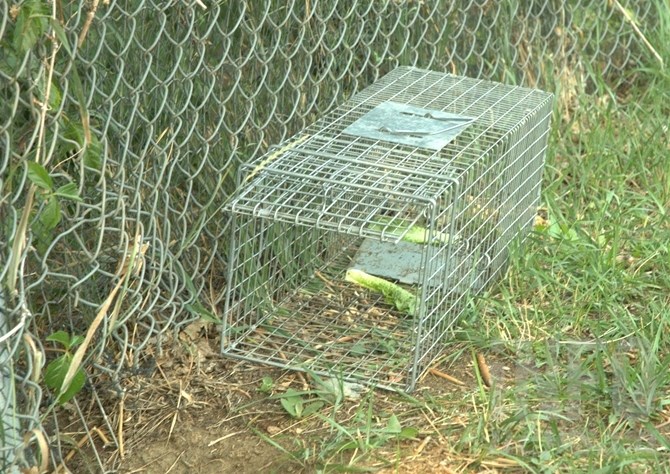
One of the yellow-bellied marmots infesting McArthur Island Park that have become a problem for the city's parks department.
(MIKE MCDONALD / iNFOnews.ca)
August 03, 2017 - 2:29 PM
KAMLOOPS - If you have taken a stroll through McArthur Island Park or Riverside Park in Kamloops this summer you may have noticed some yellow-bellied marmots — lots of them. City of Kamloops staff has noticed too, and they are scratching their heads as to what to do about them.
Parks Supervisor Shawn Cook says the marmot infestation, particularly at McArthur Island, is the result of a successful project that was trying to lower the goose population. The unintended side effect has been that the marmots have less competition for food and have been breeding at a rapid pace.
"What we did this year is we used some decoys which have scared away the geese, which helps us a lot. Cleaning up the goose poop was a lot of work," says Cook. "Now the marmots feel they have a little more freedom to go onto the fields so you are seeing them a lot more now."
Cook adds the city is also seeing a large number of marmots at Riverside Park for the first time and large populations in Aberdeen and Sahali which was unheard of until this year. The B.C. Wildlife Park had issues as well as the mini-train had to be shut down earlier this year because of marmot activity.
The main tactic being used to battle the epidemic has been setting live traps around McArthur Island and Riverside. It has only been mildly successful and Cook says the city is still trying to figure out what will work.
"There are tons of inventions on how to control geese," says Cook. "With marmots we haven't figured out a decoy or something that's going to scare them. If there was a decoy or some other method of moving them other than live trapping we would."

Several of these marmot traps can be found at McArthur Island and Riverside Park
(MIKE MCDONALD / iNFOnews.ca)
Once trapped, the marmots are then being relocated out of town and released back into the wild.
Another potential cause of the rise in the marmot population, according to Cook, is that people like to feed them. Marmots are cute and people seem to think it's fine to throw them some food.
"People do feed them a lot. If you go around Mac Island you will see people feeding them. We are trying to discourage that as much as possible," he says.
The good news for city workers trying to keep the parks clean and refill all the holes dug by the marmots is that the rodents go into hibernation very early so by mid to late August they will start to become less of an issue. The task ahead for Cook and his staff will be to come up with a game plan for next year on how to reduce the population.
Until a better solution is figured out by the city, Cook is asking for people visiting McArthur Island, Riverside, or anywhere you may see marmots: please stop feeding them.
For more information about the yellow-bellied marmot, go here.
To contact a reporter for this story, email Mike McDonald or call 250-819-3723 or email the editor. You can also submit photos, videos or news tips to the newsroom and be entered to win a monthly prize draw.
We welcome your comments and opinions on our stories but play nice. We won't censor or delete comments unless they contain off-topic statements or links, unnecessary vulgarity, false facts, spam or obviously fake profiles. If you have any concerns about what you see in comments, email the editor in the link above.
News from © iNFOnews, 2017